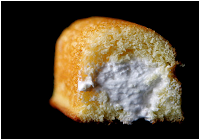Valuing IP and the Humble Twinkie
 Companies often grapple with the question of how to effectively value their investment into perfecting intellectual property rights like trademarks. Justifiably so; the question is often complex and case-specific. Any cost-benefit analysis must take into account the company’s broader business and strategic objectives, likely outcomes of applications, etc. I often assist companies in such analysis. So, I’m always on the lookout for real-life examples of IP valuation because they can be informative and fun.
Companies often grapple with the question of how to effectively value their investment into perfecting intellectual property rights like trademarks. Justifiably so; the question is often complex and case-specific. Any cost-benefit analysis must take into account the company’s broader business and strategic objectives, likely outcomes of applications, etc. I often assist companies in such analysis. So, I’m always on the lookout for real-life examples of IP valuation because they can be informative and fun.
We turn to the twinkie. Fair disclosure: on a recent trip, I found a shop with twinkies wrapped in bacon and dipped in chocolate. For some reason, my primitive brain was tempted, but sharper faculties allowed me to abstain. Been thinking about the twinkie since.
Hostess Brands, inc., Filed for chapter 11 bankruptcy this year. They are trying to work out kinks to reemerge. In the meantime, the topic of what names like “twinkie” and “ding dong” are worth is a hot one (see “why bankruptcy isn’t a brand killer”, CNN Money). Private equity firms regularly show up at intellectual property auctions following company bankruptcies to bid on the right to use defunct names. (The theory is that the value of these names has increased as a result of today’s global and internet economy, coupled with inexpensive, outsourced manufacture.) As merely one example, the “Polaroid” name was bought in 2009 for $88 million.
The punchline is that intellectual property assets (trademarks merely being one example) have value—sometimes serious value—independent of hard assets, as has been proven by bankruptcy or liquidation events, and countless other transactions.
So, where the cream meets the sponge cake, how is intellectual property actually valued? Several methods may be used, and many are very similar to valuation of real-property assets:
- Cost approach: based on the economic principle of substitution. There are several cost approach valuation methods, the most common being the historical cost, replacement cost, and replication cost.
- Market approach: based on the economic principle of competition and equilibrium. Provides an indication of the value by comparing the price at which similar property has exchanged between willing buyers and sellers.
- Income approach: this approach estimates the fair value of intellectual property by discounting the future economic benefits of ownership at an appropriate discount rate.
- Direct approach: based on the current value of shares of intellectual property in an intellectual property (IP) share market.
Yum.
CIP
